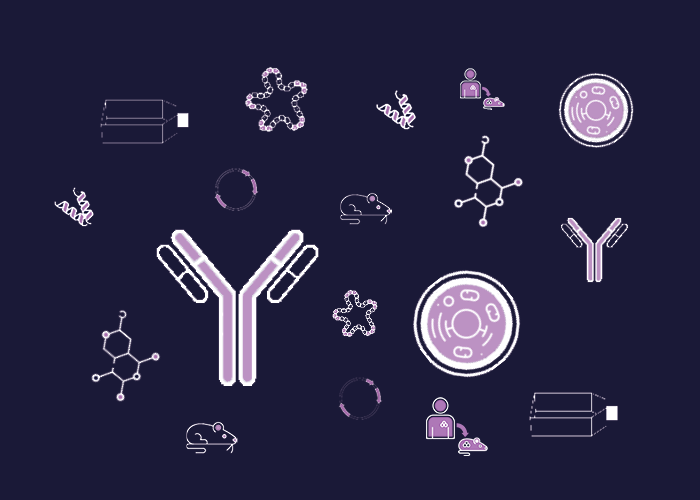
Cat. #156376
Anti-LPP3 [046]
Cat. #: 156376
Sub-type: Primary antibody
Unit size: 100 ug
Availability: 10-12 weeks
Target: Lipid Phosphate Phosphohydrolase 3
Class: Monoclonal
Application: FACS ; IP ; WB
Reactivity: Human ; Mouse
Host: Mouse
£300.00
This fee is applicable only for non-profit organisations. If you are a for-profit organisation or a researcher working on commercially-sponsored academic research, you will need to contact our licensing team for a commercial use license.
Contributor
Institute: University of Illinois Chicago
Tool Details
*FOR RESEARCH USE ONLY (for other uses, please contact the licensing team)
- Name: Anti-LPP3 [046]
- Alternate name: PLPP3, Dri42, PAP2B, VCIP, PPAP2B or phospholipid phosphatase 3
- Research fields: Cancer;Cell biology;Cell signaling and signal transduction
- Tool sub type: Primary antibody
- Class: Monoclonal
- Conjugation: Unconjugated
- Reactivity: Human ; Mouse
- Host: Mouse
- Application: FACS ; IP ; WB
- Description: An antibody against the extracellular domain of LPP3 inhibits cell-cell interactions and angiogenesis in vitro. In addition, LPP3 not only catalyzes the dephosphorylation of the bioactive lipid sphingosine-1-phosphate (S1P) to generate sphingosine but also may regulate embryonic development and angiogenesis via the Wnt pathway. LPP3 also has the ability to potentiate tumor growth by amplifying B-catenin and CYCLIN-D1 activities. Thus, LPP3 is a potential target for inhibiting the growth of glioblastoma, an aggressive type of brain tumor, and other LPP3-expressing tumors. This may serve as a link in the acquisition of proliferative, invasive, and metastatic phenotypes.
- Immunogen: A modified synthetic peptide (YRCRGDDSKVQEARKSFFc-KLH) corresponding to 179-196 of human LPP3 conjugated to keyhole limpet hemocyanin
- Recommended controls: IgG1
Target Details
- Target: Lipid Phosphate Phosphohydrolase 3
- Tissue cell line specificity: IgG1
- Target background: An antibody against the extracellular domain of LPP3 inhibits cell-cell interactions and angiogenesis in vitro. In addition, LPP3 not only catalyzes the dephosphorylation of the bioactive lipid sphingosine-1-phosphate (S1P) to generate sphingosine but also may regulate embryonic development and angiogenesis via the Wnt pathway. LPP3 also has the ability to potentiate tumor growth by amplifying B-catenin and CYCLIN-D1 activities. Thus, LPP3 is a potential target for inhibiting the growth of glioblastoma, an aggressive type of brain tumor, and other LPP3-expressing tumors. This may serve as a link in the acquisition of proliferative, invasive, and metastatic phenotypes.
Applications
- Application: FACS ; IP ; WB
Handling
- Format: Liquid
- Unit size: 100 ug
- Shipping conditions: Dry ice
References
- Humtsoe et al. 2010. Mol Cell Biol. 30(7):1593-606. PMID: 20123964.



